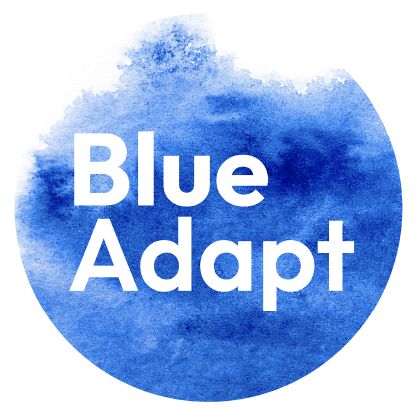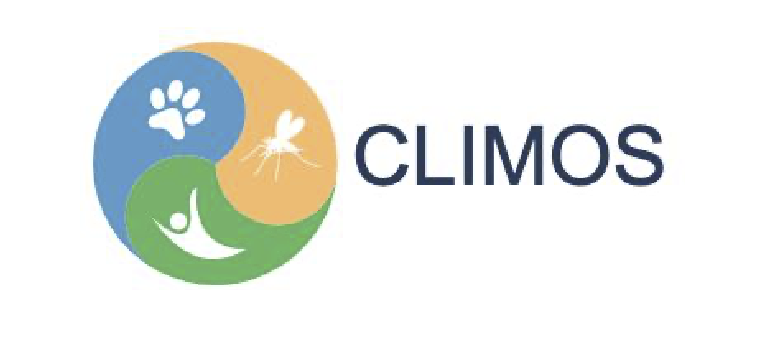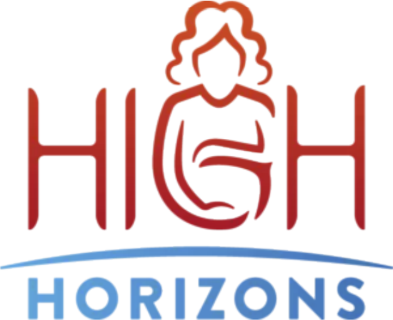project coordinators

Basque Centre for Climate Change (BC3)
BlueAdapt examines how coastal pathogens are expected to be impacted by climate change in interaction with other anthropogenic pressures such as antimicrobial resistance or environmental pollution. During the first phase we have reviewed the system characteristics, especially the interconnectedness of the many processes as play, in view of suggesting extensions to integrated health approaches such as One Health. In addition, future trends in the scientific, social, technology and policy domains were mapped. Tailored climate data for the case study sites has been produced and climate modelling dedicated to the project is under way. Important intertwined building blocks in BlueAdapt are under development: these include experimental laboratory work (establishing how changes in climatic variables affect pathogen behaviour in interaction with other pressures), field work in case study sites(understanding both pathogen presence in local coastal settings as well as human behaviour) and modelling work (being able to predict pathogen transport and abundance in estuaries and coastal zones).
What role does your project play within the cluster, and what specific expertise does it bring to it?
BlueAdapt, being located in coastal zones, provides the possibility of studyinglocal and regional adaptation interventions at the interface of marine and terrestrial systems where multiple anthropogenic stressors coincide with high human activity. BlueAdapt contributes to the Cluster with knowledge oncoastal virology and microbiology, high resolution pathogen dispersal modelling, climatology, methodologies for knowledge integration and evidence synthesis as well as health impact assessment and economics. BlueAdapt intends to provide policy support on climate change adaptation as well as on short term alert systems for predicting bathing water quality. From April 2024, BlueAdapt will take on the coordination of the Cluster – and we are looking forward to the opportunity to enhance the profile of the work we are all doing and bringing people together in different ways to enhance our impact.
Bringing together over one hundred partners, the Cluster provides the unique opportunity of addressing health impacts of climate change from multiple angles. Understanding similarities and differences of climate impacts on healthacross multiple climate hazards, diseases, environments (urban-rural or terrestrial-marine), locations (including in Africa and Asia), and multiple scales (temporal and spatial) should enable us as a Cluster to propose valuableand coherent policy recommendations.

ISGlobal
Introduction to the project and its progression over the past 18 months?
Catalyse aims to address three questions: 1) how to optimize health in climate change mitigation and adaptation? 2) how to close the knowledge-to-action gap to accelerate climate change action? 3) How should health systems adapt to climate change and reduce their footprint?
The main activity areas of the first 18 months of the project have been:
- Scoping relevant indicators related to climate change and health
- Modelling GHG and air pollution emissions under EU policy scenarios
- Develpment of EWS related to heat stress and allergic rhinitis and predictive models of cycle utilization
- Policy case studies on healthcare decarbonization and coal phase out
- Scoping reviews related to adaptation in health care, methods for assessing decarbonization in healthcare, and occupational heat stress among migrant outdoor workers
One area where Catalyse adds particular expertise is related to climate change mitigation: how it is used in framing and communication, health co-benefits of EU mitigation policies; and mitigation in the healthcare systems.
Through the development of indicators relevant to EU policy.
Explicit modelling of EU mitigation policy (e.g. Green Deal) on GHG and air pollution emissions and related health co-benefits across different sectors.

Assisstant Researcher
Universidade Nova De Lisboa (UNL)
Introduction to the project and its progression over the past 18 months?
The CLIMOS project’s focus on studying the geographical change of phlebotomine sand flies and implementing awareness and preventive measures against the diseases they transmit is crucial in the context of the EU landscape. The pressing issue of sand fly-borne diseases (SFBDs), exacerbated by climate change, environmental shifts, and globalization, has been a driving force behind research interests, with increasingly recognizing the likelihood of these diseases spreading to new geographical areas and becoming more prevalent in endemic regions.
The most important achievements so far were:
– Sand fly sampling was conducted in 11 countries (Austria, Croatia, Czech Republic, France, Germany, Israel, Italy, Portugal, Slovenia, Spain, and Turkey), covering the active sand fly season in 2023.
– Temporal sand fly data collections were conducted on more than 100 sites;
– Co-production with stakeholders of the first mockups of the Early Warning System;
– Development of the first Sand Fly-borne diseases models;
– Establishment of the CLIMOS Stakeholder Network.
The CLIMOS project focuses on an important vector-borne diseases transmission system susceptible to climate and environmental changes. We seek to provide a better understanding of climate and environmental drivers of SFBDs, to reduce model uncertainties for better prognosis of their current and potential spread, and to relate these to socioeconomics and provide risk assessments for a diversity of stakeholders. CLIMOS will deliver public access interactive mapping and information services and associated tangible recommendations for public and animal health, to enable and encourage public (social, environmental, and financial) preparedness.
Our overall goal is to minimize the risk of exposure to SFBDs in Europe, expansion to and from currently non- endemic regions and neighbouring countries, to protect the health and well-being of its citizens from climate and environment-related risks and impacts.
In my opinion, for example, the policy brief produced by the Cluster should succinctly and clearly communicate the latest findings on climate change and health research, emphasizing a One Health and Planetary Health perspective and should highlight the significance of evidence-based decision-making and provide practical recommendations for policymakers.
To better support EU policies regarding health and climate change, the Cluster should maintain its participation in high-level RTD conferences and related events. In addition, it should prioritize maximizing communication and dissemination of results from project networks to ensure policymakers and stakeholders receive key findings effectively.

Stanley Luchters, PhD
Liverpool School of Tropical Medicine
London School of Hygiene & Tropical Medicine
HIGH Horizons (Heat Indicators for Global Health) focuses on research and action to address the impact of extreme heat on vulnerable groups, pregnant and postpartum women, newborns and children and health workers, three groups that are heavily affected by the climate crisis.
The project brings together 11 partners from across 10 countries and aims to identify and select suitable indicators for quantifying and monitoring the global, EU and national-level health impacts of extreme heat, develop and test Early Warning Systems designed to provide individualised heat stress warnings and locally adapted messaging and implement integrated adaptation-mitigation interventions in health facilities to alleviate heat impacts on health workers and to reduce carbon emissions associated with health care.
The project’s efforts will work not only to understand the challenges of our changing climate and risks to health but also contribute to support global and EU climate policymakers to design effective climate policies.
HIGH Horizons participates in all the EU Cluster Working Groups and co-leads the Science for Policy Working Group and the Indicators Working Group. Our project is also the only one to have a specific focus on Mothers, Infants and Children and the Health Care Workers who take care of them during pregnancy, childbirth and postpartum. Therefore, we have a unique role to raise awareness about the specific vulnerabilities of the populations and advocate for their inclusion in any climate action plan, adaptation or mitigation interventions, early warning systems and indicators to address the impacts of heat on mothers and children.
We have a Science for Policy Plan, a Dissemination, Exploitation and Communication Plan and a Science Plan which outline EU Horizons Climate and Health Cluster joint activities and workplan. The cluster provides a wider network to share research methods, ideas and, in future, results beyond the individual expertise of each project. This will in turn enrich the overall findings across countries and contexts and provide a stronger science base for policy and action.

Umeå University (Sweden) & Heidelberg University (Germany)
IDAlert is researching the interconnectedness between climate change, the environment, and infectious diseases. Over the first 18 months of the project, we have developed several new indicators to monitor and early warning signs of transmission suitability and outbreak risk.
IDAlert has also successfully implemented field studies in its six case study locations within and outside Europe. These studies pilot novel data streams for surveillance, including citizen science of ticks and mosquitoes, smart mosquito surveillance, and a mobile pathogen laboratory. Furthermore, it has begun evaluating interventions in urban design and land use. IDAlert adopts a transdisciplinary approach and has co-produced its research with stakeholders who are either part of the project or invited to meetings and workshops.
IDAlert maintains a close collaborative relationship with the Lancet Countdown on Climate Change and Health in Europe, thus contributing to wider research-to-policy translation, such as uploading indicators to the EEA Climate and Health Observatory. Additionally, IDAlert is highly engaged in studying vulnerability within the nexus of the project and further investigates unintended consequences of pre-existing policies and actions.
Together, the cluster can generate a more holistic overview and a set of indicators for the EEA Climate and Health Observatory, as well as study unintended consequences from such a perspective. Consequently, it can provide a better and more comprehensive synthesis for policy and climate action.

Silvana Di Sabatino, PhD
Professor – Atmospheric Physics
University of Bologna
The Horizon Europe-funded project TRIGGER (soluTions foR mltlGatinG climate-induced hEalth thReats; GA 101057739; https://project-trigger.eu/) aims to deepen the current understanding of the linkage between climate, health, and ecosystems (exposome framework) and use this knowledge to advance societal uptake at personal and policy levels. The first 18 months of the project have been devoted to operationalizing five Climate Health Connection Labs (CHCL). The 5 TRIGGER CHCL are strategically distributed to represent a widely different set of geographical and socio-economic conditions in Europe, from southern Europe (Crete, Italy) to northern Europe (Finland), including examples in central Europe (Germany and Switzerland). As such, the CHCL represent regions impacted differently by climate change and thereby induced extreme events, but also by a different level of individual thermal tolerance, biodiversity, societal response, and perceptions of risks and benefits of climate and environment-related issues. Grounded in the Living Lab concept, the CHCL and the scientific knowledge generated in TRIGGER are rooted in the real contexts of civil society; indeed, the CHCL involve local doctors, health practitioners, climatologists, policymakers, as well as citizens in small, medium, and large urban areas. The work done on the ground includes the initiation of cross-clavis studies: clinal studies devoted to understanding possible attributions between meteo-climate conditions and the health condition of patients affected by cardiovascular diseases.
Within the first 18 months of the project, existing knowledge on climate change and human health linkage has been obtained. Specific indicators and proxies to best describe and assess direct and indirect relationships between climate, the social-economic system, and human health and well-being are identified. Simultaneously, an inventory of existing monitoring and modeling tools for historical analysis, future projections, and medium-range forecasts of exposure to CC-induced hazards is realized. At the same time, existing mitigation and adaptation policies at international and local levels are being mapped utilizing both conventional (desk research) and innovative search tools (text mining). A thorough review of the status of EU and local actions will give the opportunity to TRIGGER to construct evidence-based and solid policymaking grounded on identified gaps.
The specific role that TRIGGER can bring is the wide distribution of expertise ranging from clinicians, epidemiologists, meteorologists, numerical modellers, sensors developers, data scientists working at the frontier of the indersciplinary research. The specificity is also attributable to the large amount of clinical studies which are intended to provide novel data of the distribution of cardio-vascular diseases in several regions of Europe that are in turn affected by climate change in different ways.
The actions of the cluster are fundamental to achieve a clear overview of how climate change affect human health in Europe. Only by harmonizing the results from the individual project such a clarity can be achieved and therefore support policy development on proper scientifically-sound evidence.




